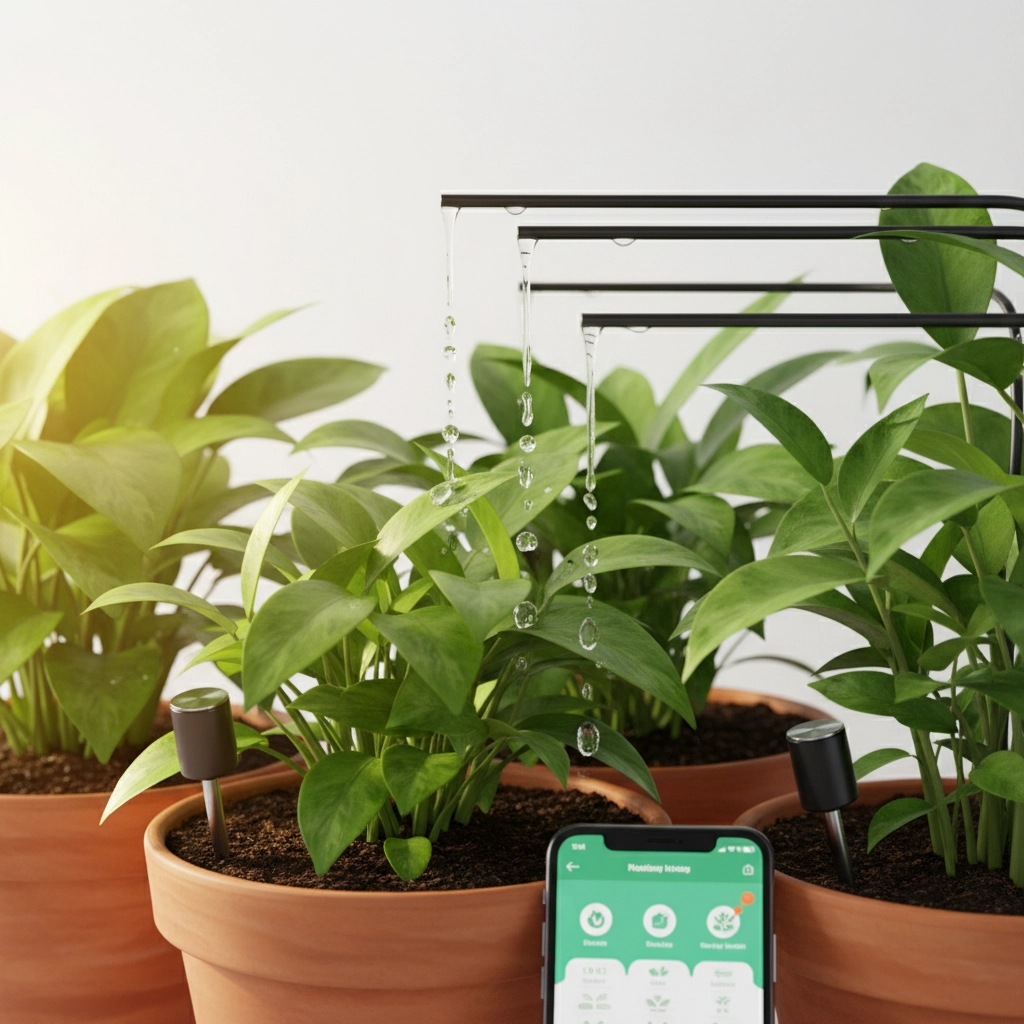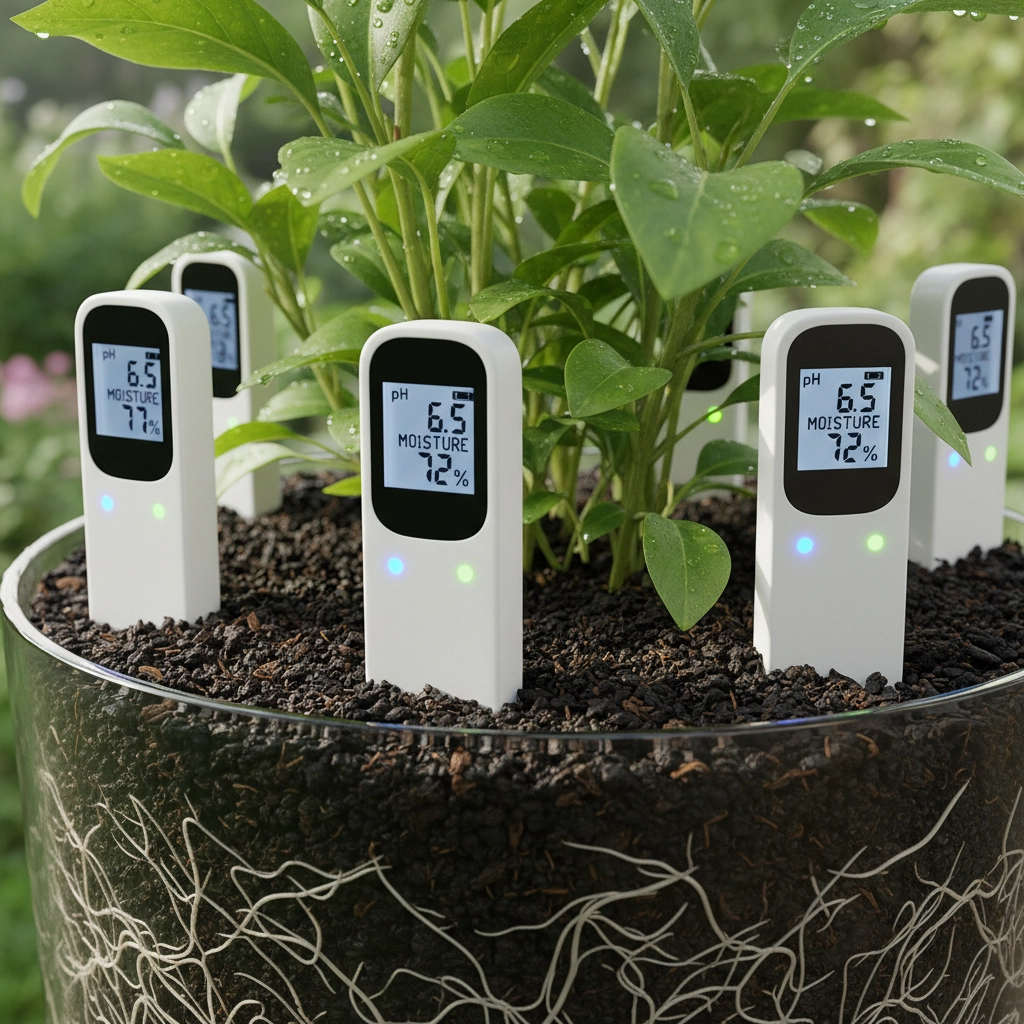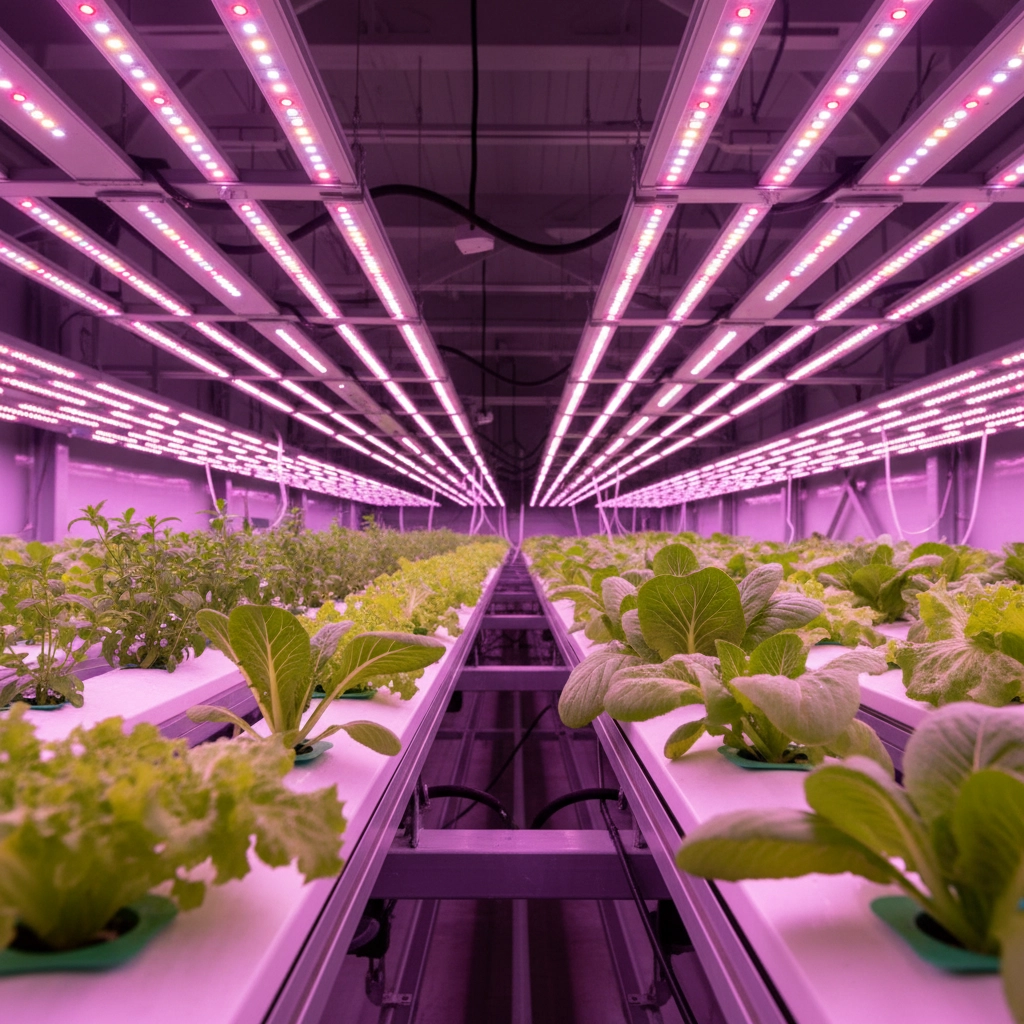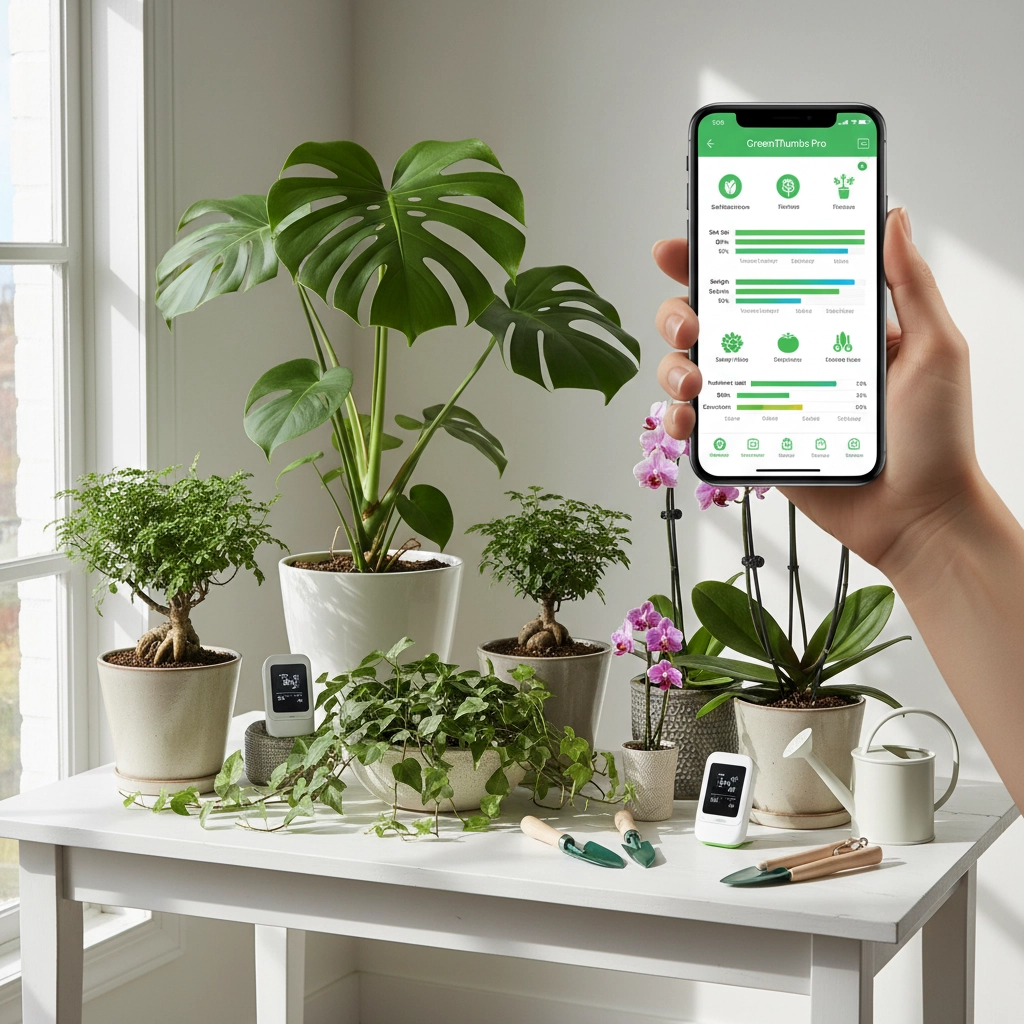Blog
Smart Indoor Gardening Setup: 7 Must-Have Automation Tools That Cut Your Work in Half
Indoor gardening doesn't have to consume your entire weekend or require daily attention to keep plants thriving. The right automation tools can transform your growing setup from a time-intensive hobby into a streamlined, efficient system that practically runs itself. These seven essential automation tools will cut your daily gardening tasks in half while actually improving your plant health and yields.
The fact of the matter is, most indoor gardeners spend 30-60 minutes daily on routine maintenance tasks like watering, monitoring, and adjusting environmental conditions. With proper automation, you can reduce this to just 5-10 minutes of weekly oversight while achieving better growing results.
1. Smart Irrigation and Watering Systems
Automated watering represents the biggest time-saver in any indoor garden setup. These systems eliminate daily watering checks and prevent the two most common plant killers: overwatering and drought stress.
Smart irrigation controllers use soil moisture sensors to detect exactly when plants need water. They deliver precise amounts based on each plant's specific requirements, automatically adjusting schedules based on environmental conditions, plant growth stages, and even seasonal changes.

Key Features That Save Time:
- Moisture-based triggers eliminate guesswork
- Zone-specific watering for different plant types
- Remote monitoring through mobile apps
- Automatic schedule adjustments
- Leak detection and system diagnostics
Realistic Expectations: While these systems are highly reliable, you'll still need to refill reservoirs and occasionally clean sensors. The initial setup requires some trial and error to dial in perfect watering amounts for each plant type.
2. Soil Monitoring Sensors
Advanced soil sensors continuously track the critical parameters that determine plant health: pH levels, moisture content, nutrient concentrations, light exposure, and soil temperature. These devices provide real-time insights through mobile apps, alerting you only when intervention is needed.
Instead of daily manual soil checks with pH meters and moisture probes, these sensors deliver precise data 24/7. You'll know immediately when soil pH drifts outside optimal ranges or when nutrient levels drop, allowing you to address issues before they impact plant growth.
What They Monitor:
- Soil pH (critical for nutrient uptake)
- Moisture levels (prevents over/under-watering)
- Light intensity reaching plants
- Ambient and soil temperature
- Electrical conductivity (indicates nutrient levels)
The sensors eliminate the need for constant manual testing while providing more accurate data than occasional spot checks. Most quality sensors last 6-12 months before requiring calibration or replacement.
3. Smart LED Growing Lights
Automated lighting systems with programmable timers and adjustable spectrums remove the need for manual light management throughout different growth phases. These LED systems automatically adjust light intensity, duration, and color spectrum based on plant type and growth stage.

Automation Features:
- Programmable sunrise/sunset cycles
- Spectrum adjustment for vegetative vs. flowering stages
- Automatic dimming based on ambient light
- Energy optimization algorithms
- Integration with environmental controllers
Smart lights can simulate natural light cycles that promote healthy plant development without requiring daily adjustments. The more advanced systems learn your plants' responses and optimize lighting schedules automatically.
Energy Considerations: While LED systems are efficient, automated lighting can still represent a significant portion of your electricity bill. Calculate operating costs before installation, and consider timer-controlled outlets as a budget-friendly starting point.
4. All-in-One Smart Gardening Hubs
Comprehensive control systems centralize all your gardening automation into a single interface. These hubs connect various smart devices through Wi-Fi, providing unified dashboards accessible from anywhere.
Quality gardening hubs allow you to build custom "grow recipes" with personalized environmental parameters for different plant types. Instead of managing multiple apps and devices separately, everything connects through one central system.
Hub Capabilities:
- Device integration and control
- Live environmental monitoring
- Custom automation rules
- Historical data logging
- Remote access and alerts
Setup Reality: Getting all devices to communicate reliably can take some troubleshooting. WiFi connectivity issues are common initially, and you'll need a stable internet connection for remote monitoring features.
5. Automated Smart Planters
Self-contained smart planters integrate watering, climate control, and lighting into complete growing environments that require minimal intervention. These are particularly valuable for space-limited indoor gardens or beginners who want plug-and-play simplicity.

Modern smart planters feature built-in sensors that automatically adjust growing conditions based on plant needs. The all-in-one design eliminates the complexity of assembling separate automation components while providing controlled environments optimized for herbs, vegetables, and ornamental plants.
Built-in Features:
- Integrated water reservoirs
- Full-spectrum LED lighting
- Climate monitoring and adjustment
- Nutrient dosing systems
- Mobile app control
Size Limitations: Most automated planters are designed for smaller plants and herbs. If you're growing larger vegetables or multiple plants, you'll need multiple units or a larger custom system.
6. Environmental Control Systems
Smart environmental controllers automatically manage temperature, humidity, and air circulation to maintain optimal growing conditions without manual adjustments. These systems control ventilation fans, heating elements, and humidifiers based on target parameters you set.
Advanced environmental controllers also manage CO2 levels and vapor pressure deficit (VPD) for precision growing conditions. The system maintains consistent environments that promote healthy plant development while preventing common issues like mold, mildew, and heat stress.
Controlled Parameters:
- Temperature regulation (heating/cooling)
- Humidity control (humidifiers/dehumidifiers)
- Air circulation (intake/exhaust fans)
- CO2 supplementation
- VPD optimization
Installation Note: Environmental control systems require proper ventilation setup and may need electrical work for high-powered components. Factor installation costs and complexity into your planning.
7. Garden Management Apps and Data Logging
Integrated mobile applications serve as command centers for your entire smart garden setup. These apps eliminate manual record-keeping by automatically logging environmental conditions, watering schedules, and plant growth data.

The built-in analytics help identify optimal growing patterns and alert you to potential issues before they become problems. Instead of reactive maintenance and troubleshooting, you can prevent plant losses through predictive insights.
App Functions:
- Historical data tracking and analysis
- Automated scheduling and reminders
- Growth pattern recognition
- Predictive maintenance alerts
- Remote system control
Data Privacy: Consider what data these apps collect and where it's stored. Some systems require cloud connectivity, which may raise privacy concerns for certain growers.
The Combined Impact of Full Automation
When integrated together, these seven automation tools create a self-managing indoor garden ecosystem. The system handles routine tasks automatically while providing actionable insights only when decisions or interventions are needed.
Realistic Time Savings:
- Daily tasks reduced from 30-60 minutes to 5-10 minutes weekly
- Elimination of weekend "catch-up" maintenance sessions
- Fewer plant losses due to neglect or human error
- More consistent growing conditions leading to better yields
Investment Considerations: A complete automation setup requires significant upfront investment, typically $500-2000+ depending on garden size and complexity. However, the time savings and improved plant health often justify the cost for serious indoor gardeners.
The key is starting with one or two core systems like automated watering and environmental monitoring, then expanding your automation as you gain experience and identify the biggest time drains in your current setup.
Getting Started: Begin with smart watering and basic environmental monitoring before adding advanced features. This approach lets you learn the systems gradually while seeing immediate time savings from the most impactful automation tools.
Perfect Gardens offers complete grow packages that integrate many of these automation tools, making it easier to build a cohesive smart gardening system without compatibility concerns between different manufacturers.
